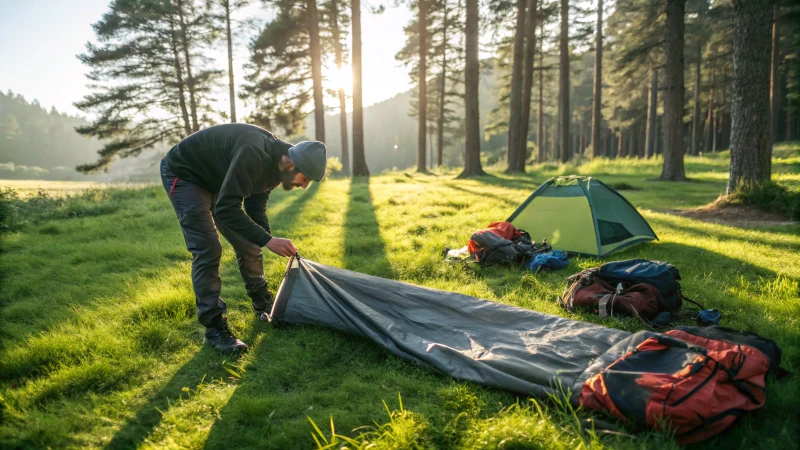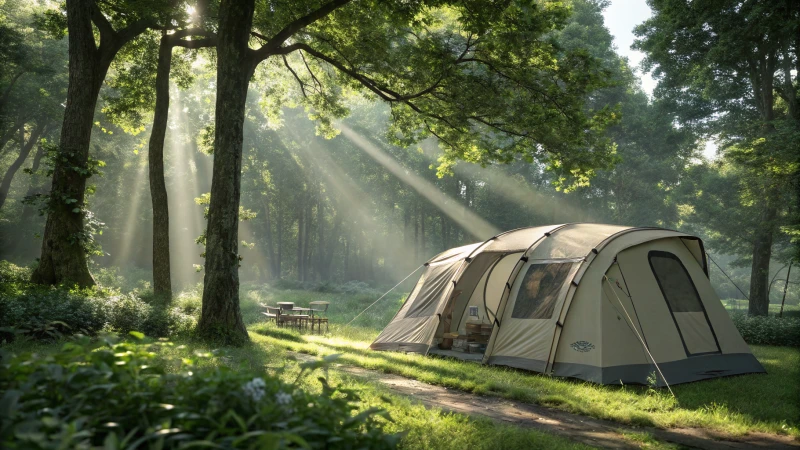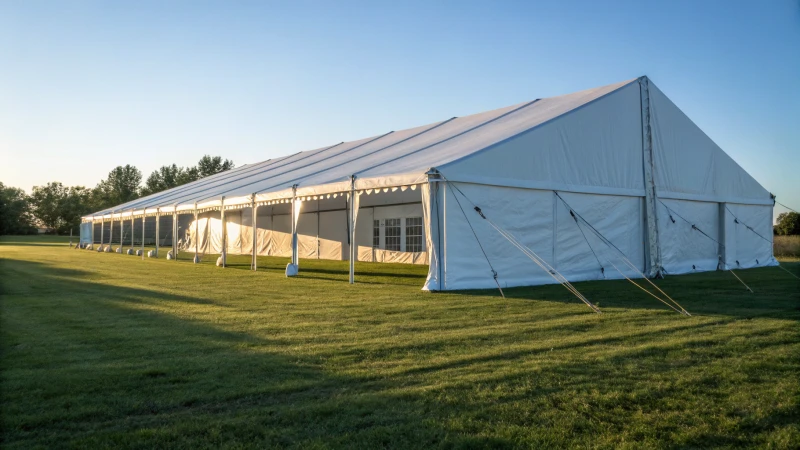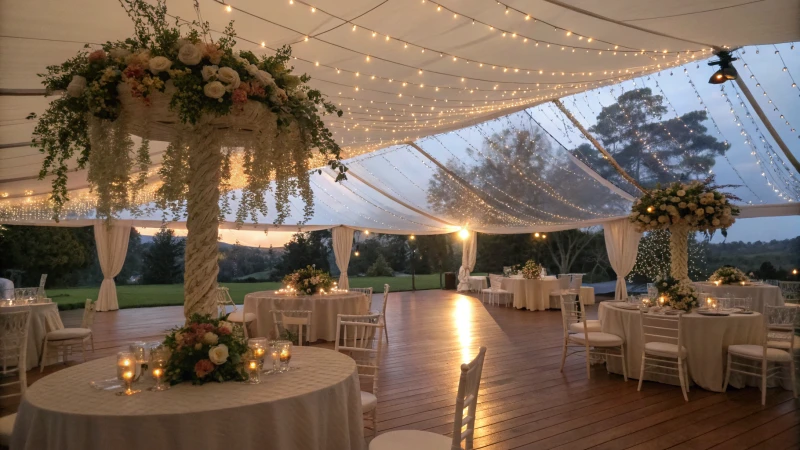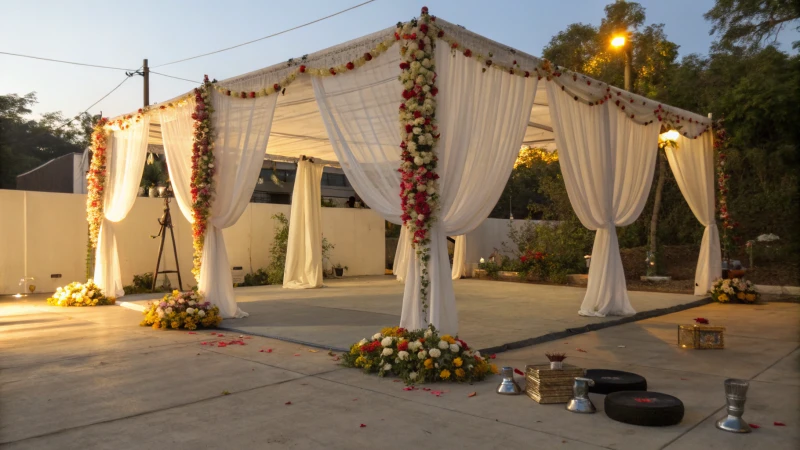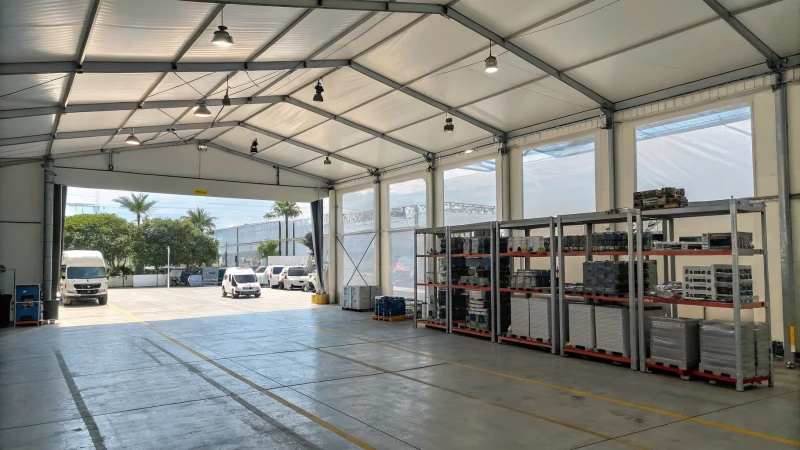
Have you ever felt stuck trying to make the most of your industrial tent structures? I know I have!
To maximize the use of industrial tent structures, I’ve found it crucial to focus on choosing the right size and layout, enhancing stability, optimizing storage, and implementing climate control solutions. These strategies help ensure that the tents meet your business needs efficiently and offer long-term value.
When I first started using industrial tents, I was overwhelmed by all the possibilities. I remember setting one up for a local event, only to realize halfway through that the layout wasn’t optimized for easy flow and access. That’s when I learned the importance of planning the interior layout and considering future needs. Over time, I also discovered that reinforcing structures and adding weatherproofing materials can make a significant difference, especially during unpredictable weather. By diving deeper into these strategies, I not only improved functionality but also ensured safety and durability. It’s amazing how small tweaks can transform these tents into versatile, reliable spaces.
Industrial tents can be used for permanent installations.False
Industrial tents are primarily designed for temporary use, not permanent.
Climate control is essential for maximizing tent utility.True
Effective climate control ensures comfort and extends the tent's usability.
How Do You Choose the Right Tent Size and Layout?
Ever feel overwhelmed choosing the right tent for your camping adventures? I totally get it. Let me guide you through selecting the perfect size and layout.
To choose the ideal tent size and layout, think about the number of people, the amount of gear, and how you plan to use the tent. Typically, you need about 20 square feet per person for sleeping, plus extra space for your gear.
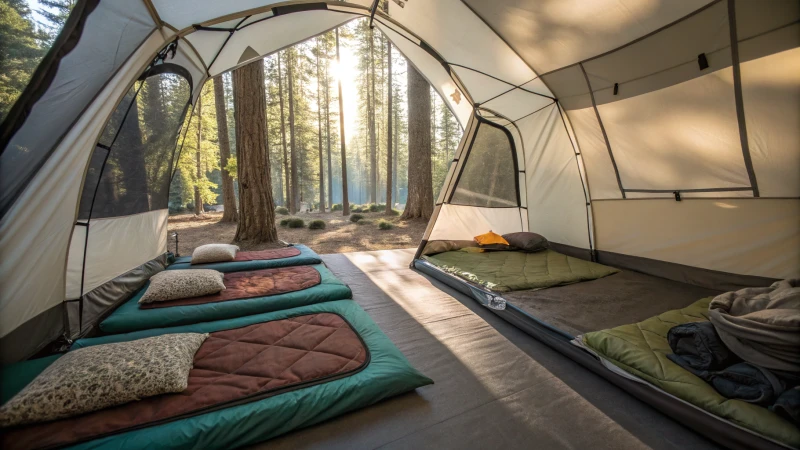
Assessing Your Occupancy Needs
I remember my first camping trip with friends; we packed a two-person tent for three of us. We ended up sleeping like sardines with our backpacks crammed in the corner. Lesson learned! Now, I always start by figuring out how many people will be sleeping in the tent. Most tents indicate capacity based on how many people can fit without gear, so keep that in mind.
- Solo Campers: If you’re flying solo, a one-person tent with a vestibule for your gear is ideal. Trust me, you’ll appreciate the extra space on long hikes, so go for a lightweight model1.
- Couples or Pairs: A two-person tent might work, but I’ve found a three-person tent gives that extra wiggle room for both people and gear.
- Families: For family trips, a larger tent with separate rooms can save your sanity. Look for family-sized options with storage pockets and a cozy central living area2.
Understanding Tent Layout Options
When it comes to layout, different designs have unique perks. Here’s a quick breakdown:
| Layout Type | Features |
|---|---|
| Dome | Versatile and easy to set up; good for all weather |
| Cabin | Vertical walls for extra space; ideal for families |
| Tunnel | Offers maximum headroom; great for group camping |
| Geodesic | Excellent stability in harsh weather conditions |
Each type has its pros and cons. I often consult detailed tent diagrams3 before making a decision.
Considering Storage and Utility Spaces
Think beyond just where you’ll sleep. On one camping trip, I learned the hard way about keeping muddy boots out of my sleeping area. Consider these elements:
- Vestibules: These are lifesavers for storing gear outside your sleeping quarters—perfect for muddy boots!
- Gear Lofts: Overhead storage can free up precious floor space, and many tents have built-in gear lofts4.
- Integrated Ports: Love your gadgets? Some tents even have ports for electrical cords.
Exploring different configurations can really enhance your camping experience. Check out guides on creating efficient tent setups5 to find what suits you best.
A dome tent is ideal for all weather conditions.True
Dome tents are versatile and easy to set up, suitable for various weather.
A two-person tent is always enough for two campers.False
Two-person tents fit two people but may lack comfort and gear space.
How Can You Enhance Tent Stability and Durability?
Picture this: your tent standing strong against a storm, unshaken by the elements. With a few smart tweaks, you can make this your reality.
To boost tent stability and durability, focus on solid anchoring, select weather-resistant materials, and ensure regular maintenance. Adding extra support in extreme weather can also help.

Reinforce Your Tent’s Anchoring System
I’ve learned that anchoring is the backbone of a stable tent. On one camping trip, the wind was so fierce it felt like it might lift us off the ground! Since then, I’ve always used high-quality stakes, like steel or heavy-duty plastic, which grip well in any terrain. And in particularly windy spots, I add extra tie-downs6 to keep everything snug.
Choose the Right Materials
Once, I made the mistake of going cheap on a tent with a flimsy frame. After just one season, it was barely holding together. So now, I opt for tents with aluminum or reinforced steel frames for their strength and rust resistance. For fabric, I choose a weather-resistant option7 like PVC-coated polyester or vinyl to combat UV rays and moisture. Trust me, the right materials make a world of difference.
| Material | Pros | Cons |
|---|---|---|
| Aluminum | Lightweight, non-rust | Can be more expensive |
| Reinforced Steel | Extremely durable | Heavier to transport |
| PVC-Coated Polyester | UV resistant, waterproof | May be less breathable |
Conduct Regular Maintenance
Regular checks can save you headaches down the road. I recall a trip where a small tear turned into a massive rip because I ignored it. Now, I inspect my tent for any tears and repair them immediately with patch kits. Tightening loose components keeps everything taut, and removing debris buildup prevents any sagging.
Prepare for Extreme Weather Conditions
Once while camping in the mountains, we faced unexpected heavy winds and rain. Since then, I’ve always used additional support like guy lines8 or internal pole systems to ensure my tent’s structural integrity is up to the challenge.
By following these tips, you’ll ensure your tent stands firm against whatever Mother Nature throws your way.
Steel stakes provide better grip than plastic ones.True
Steel stakes are heavier and penetrate the ground more effectively.
PVC-coated polyester tents are breathable.False
PVC coating makes fabric waterproof but reduces breathability.
How Can You Master Climate Control in Tents?
Remember that time you were at an outdoor event and the heat felt like a giant warm hug you didn’t ask for? Climate control in tents can save the day!
To effectively control climate in tents, focus on ventilation, insulation, and portable temperature systems. These steps ensure a comfortable environment, no matter the weather.

Ventilation Techniques
Imagine being inside a tent during a sweltering summer event—everyone’s trying to stay cool, and you’re responsible for making it happen. I remember once being caught unprepared, and I wished I had thought about ventilation beforehand. To prevent such situations, consider using vented sidewalls or installing exhaust fans. These nifty portable exhaust fans9 can be game-changers by boosting air circulation and keeping everyone happy.
Insulation Strategies
You know those times when the weather can’t make up its mind? Insulating your tent can be a lifesaver. I often use reflective tarps and insulated curtains to keep the temperature just right. They work wonders by minimizing heat loss during cold spells and reducing heat gain on those blazing hot days.
| Insulation Material | Advantages |
|---|---|
| Reflective Tarps | Reduces heat gain |
| Insulated Curtains | Minimizes heat loss |
Portable Heating and Cooling Solutions
I’ve learned through trial and error that having portable heaters or air conditioners on hand is crucial. Investing in devices like portable air conditioners10 can make a huge difference, especially for larger tents. They’re fantastic for maintaining a stable atmosphere when the weather decides to throw a curveball.
Humidity Control
Let’s talk humidity—my personal nemesis when it comes to tent events. Balancing it out with dehumidifiers in wet climates or humidifiers in dry ones has saved me countless times. Just make sure your device matches the tent’s size and purpose.
Strategic Placement of Equipment
One tip I’ve picked up is placing heating or cooling units at strategic spots. It’s all about even distribution of air, and setting them at higher points is key since hot air rises.
Monitoring Systems
For someone like me who loves gadgets, smart thermostats or monitoring systems are a must. They keep you informed of temperature changes, allowing you to make quick adjustments without breaking a sweat.
Safety Precautions
Safety first! It’s something I can’t stress enough. Regularly check your equipment for any faults and ensure all installations meet safety standards to avoid any mishaps.
By incorporating these practices, not only do you ensure comfort within your tent, but you also enhance functionality for any event or situation you might face. Discover more strategies11 to elevate your tent experience with our comprehensive guides.
Vented sidewalls prevent heat buildup in tents.True
Vented sidewalls enhance airflow, reducing heat accumulation.
Reflective tarps increase heat gain in tents.False
Reflective tarps reduce heat gain by reflecting sunlight.
How can modular features maximize flexibility?
Imagine transforming your projects with the power of modularity, where adaptability meets creativity.
Modular features enhance flexibility by allowing components to be independently modified, removed, or added. This adaptability is essential in systems design and programming, where changes are frequent, and rapid deployment is critical.

Understanding the Core Benefits of Modularity
I remember the first time I dove into modular design. It felt like discovering a secret weapon. The beauty of modularity is in its simplicity—it lets you break down complex systems into smaller, manageable parts. Each module stands on its own, which means you can tweak or swap one out without sending the whole system into a tailspin. It’s like having a Lego set; you can build and rebuild as your needs evolve. This approach not only streamlines system maintenance12 but also sets the stage for growth and scalability.
Practical Applications in Software Development
In my journey through software development, I found that microservices were a game-changer. Imagine an app as a collection of small, nimble services that chat over a network. Each service is its own little boss, handling its tasks while being ready to scale or update independently.
Example of Microservices Architecture
| Feature | Traditional Monolith | Microservices |
|---|---|---|
| Deployment | All components together | Individual services |
| Scalability | Limited to whole system | Independent scaling |
| Maintenance | Complex and risky | Easier and safer |
Modularity in Product Design
I’ve also seen modularity work wonders in product design. Take furniture, for example. I once helped a friend redesign her living room with modular pieces that could be reconfigured to fit any space or need. This kind of flexibility doesn’t just solve practical problems; it leads to more customer-tailored solutions13 and happier customers.
Case Study: Modular Furniture Design
Consider a sofa that can be rearranged into various configurations. It’s perfect for fitting into any room shape or size while adapting to changing needs over time.
Key Considerations When Implementing Modularity
- Interoperability: Make sure each module can play nicely with others. This requires standard interfaces and protocols.
- Integration Testing: Regularly test to ensure modules work seamlessly when integrated.
- Version Control: Keep track of changes in individual modules to manage updates effectively.
Embracing modular features has been a revelation for me, streamlining project management and delivery by letting teams zero in on specific areas without impacting the entire system. By weaving flexible design principles14 into your projects, you can stay agile and ahead of the curve as market demands and technology evolve.
Modular designs improve system maintenance efficiency.True
Modular designs allow easy updates or replacements, enhancing maintenance.
Microservices architecture limits scalability in software.False
Microservices enable independent scaling of services, enhancing scalability.
Conclusion
Maximize industrial tent structures by optimizing size, layout, stability, storage, climate control, and modular features for versatile and efficient use in various applications.
-
Discover top-rated lightweight tents that offer comfort and portability for solo adventures. ↩
-
Explore family tents featuring spacious living areas suitable for group activities. ↩
-
Visualize various tent layouts with detailed diagrams to find your perfect setup. ↩
-
Learn about tents equipped with gear lofts for convenient overhead storage. ↩
-
Get ideas on organizing your tent space efficiently to enhance your camping experience. ↩
-
Explore various tent stake options to enhance stability in windy conditions. ↩
-
Discover the best materials for weather-proofing your tent effectively. ↩
-
Learn how to properly set up guy lines to reinforce your tent’s stability. ↩
-
Find effective exhaust fan options to enhance air circulation within your tent. ↩
-
Explore portable air conditioning units suitable for maintaining a comfortable temperature in large tents. ↩
-
Learn about innovative climate control techniques to further improve your tent environment. ↩
-
Explore why modular systems are easier to maintain, offering flexibility in updates and fixes. ↩
-
Learn how modularity provides tailored solutions, enhancing customer satisfaction and product usability. ↩
-
Understand principles that enhance adaptability and responsiveness in design using modular architecture. ↩



